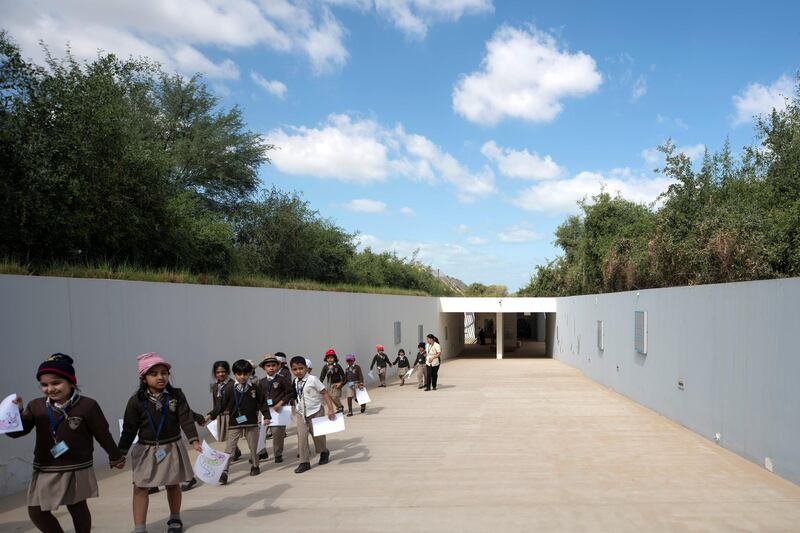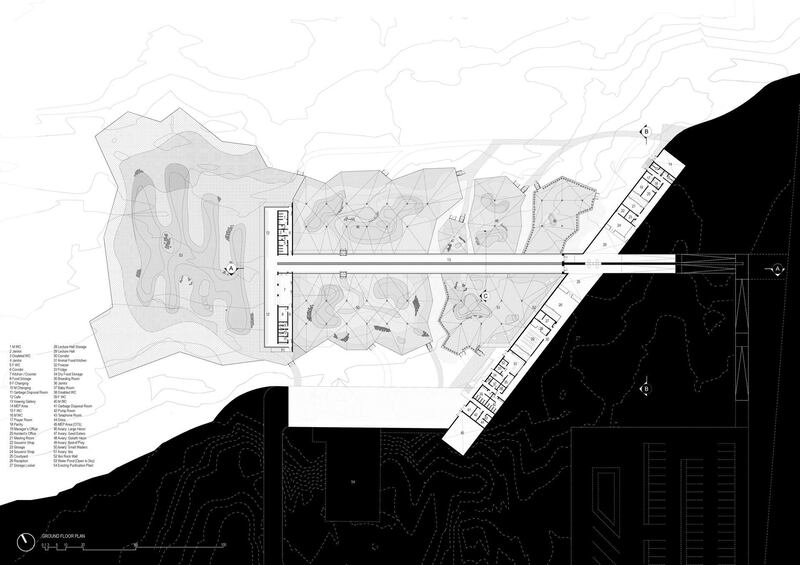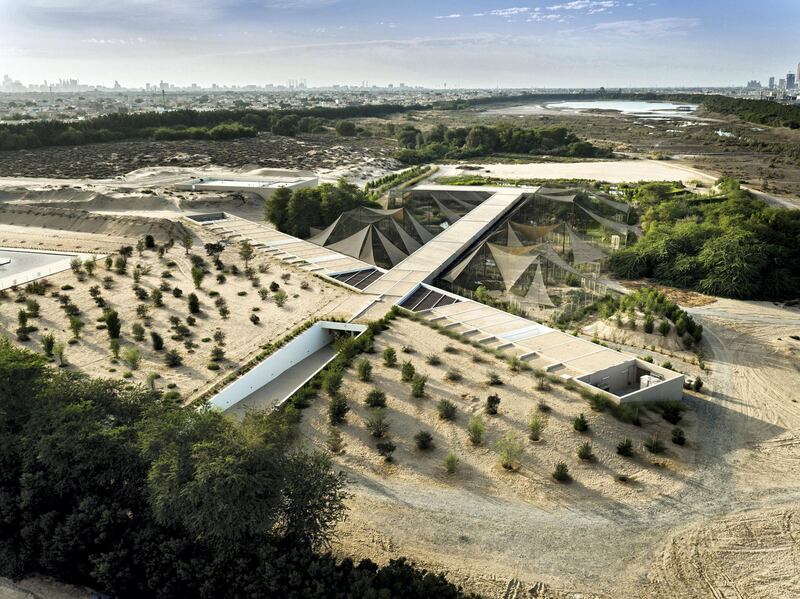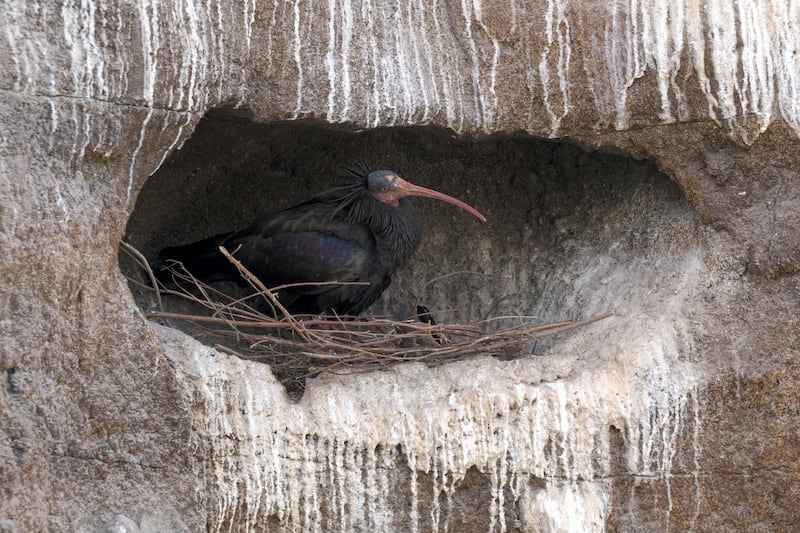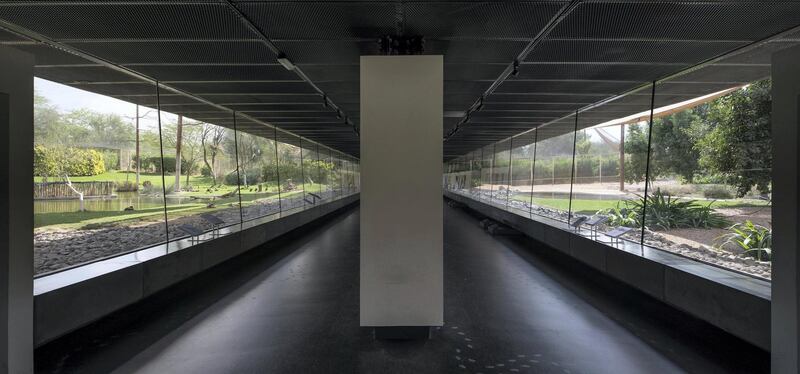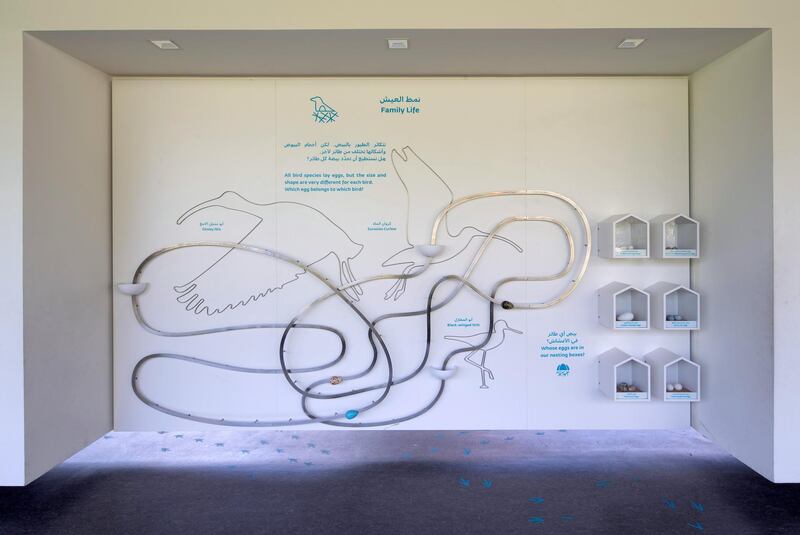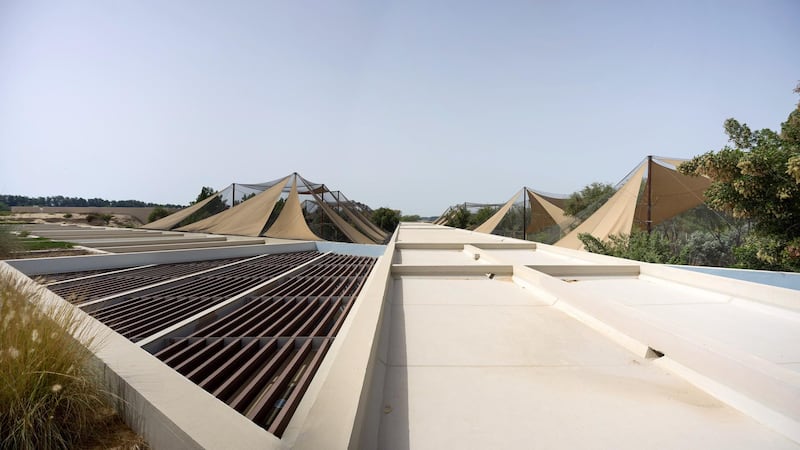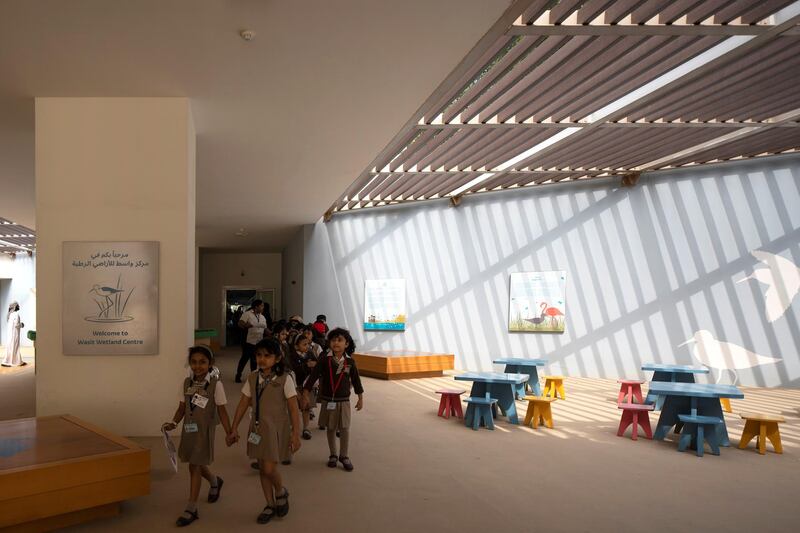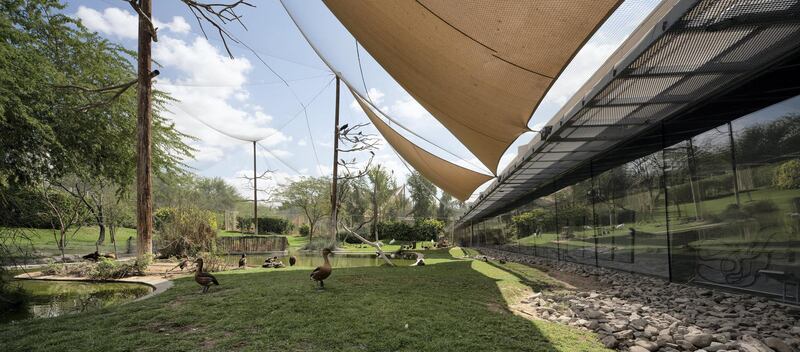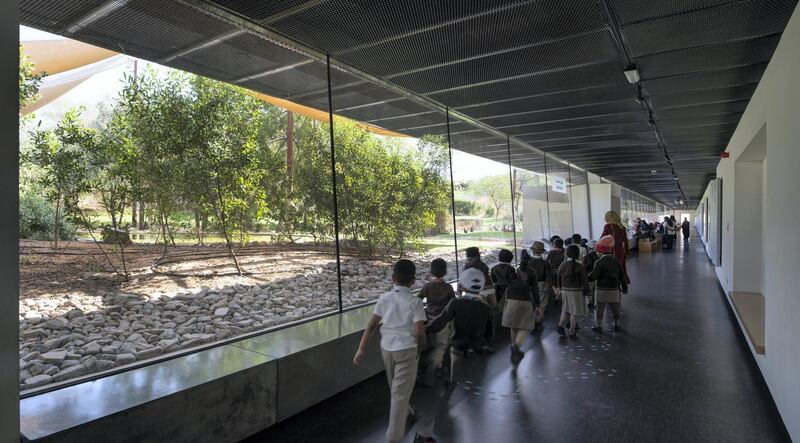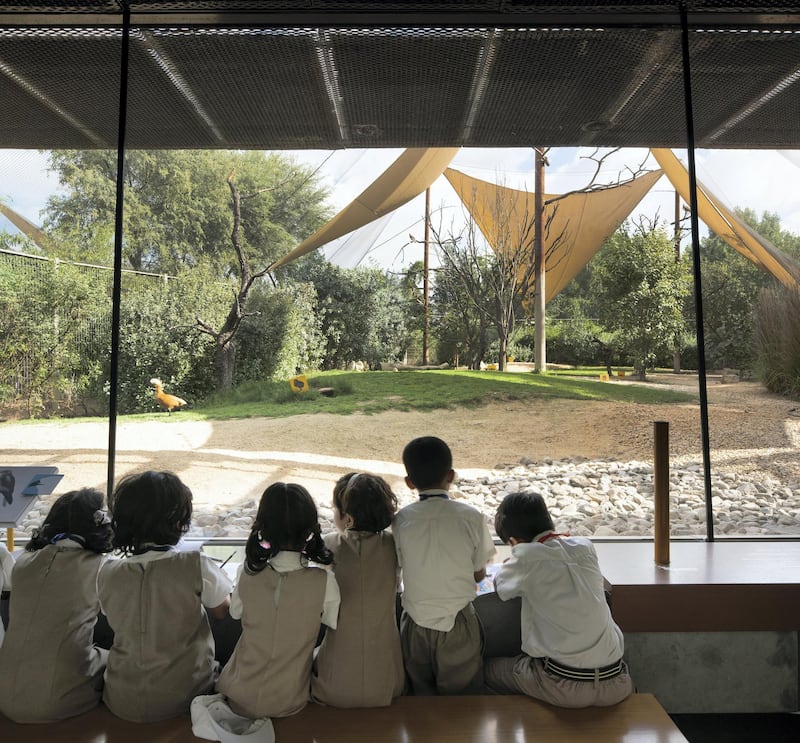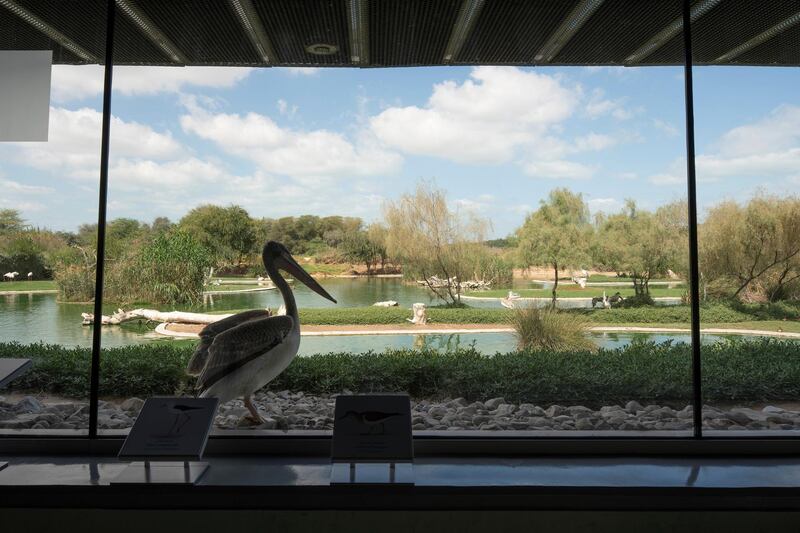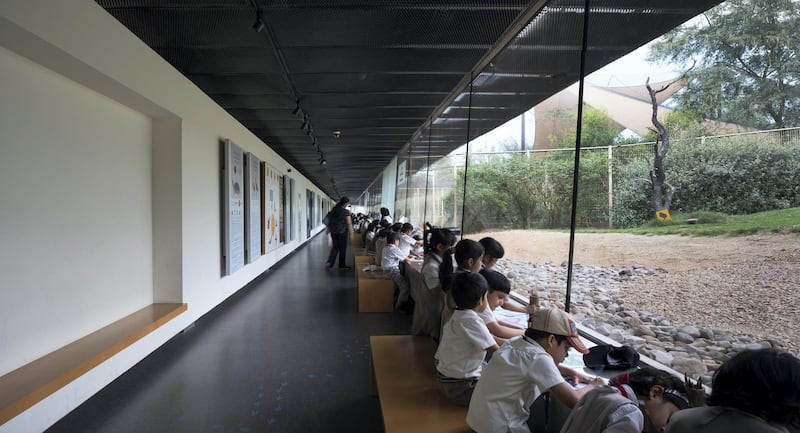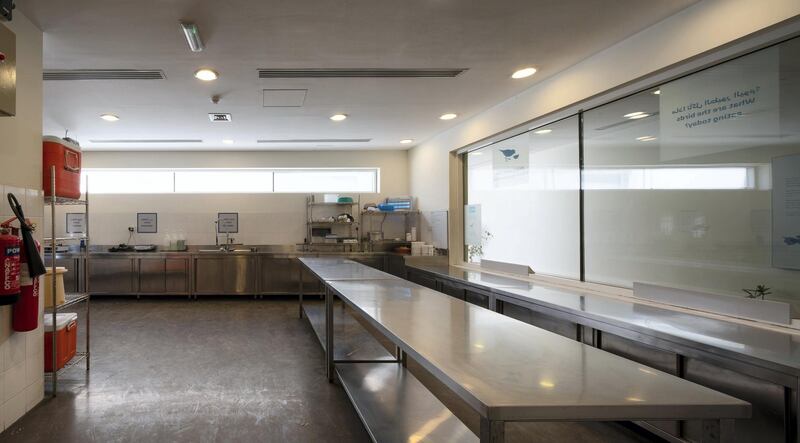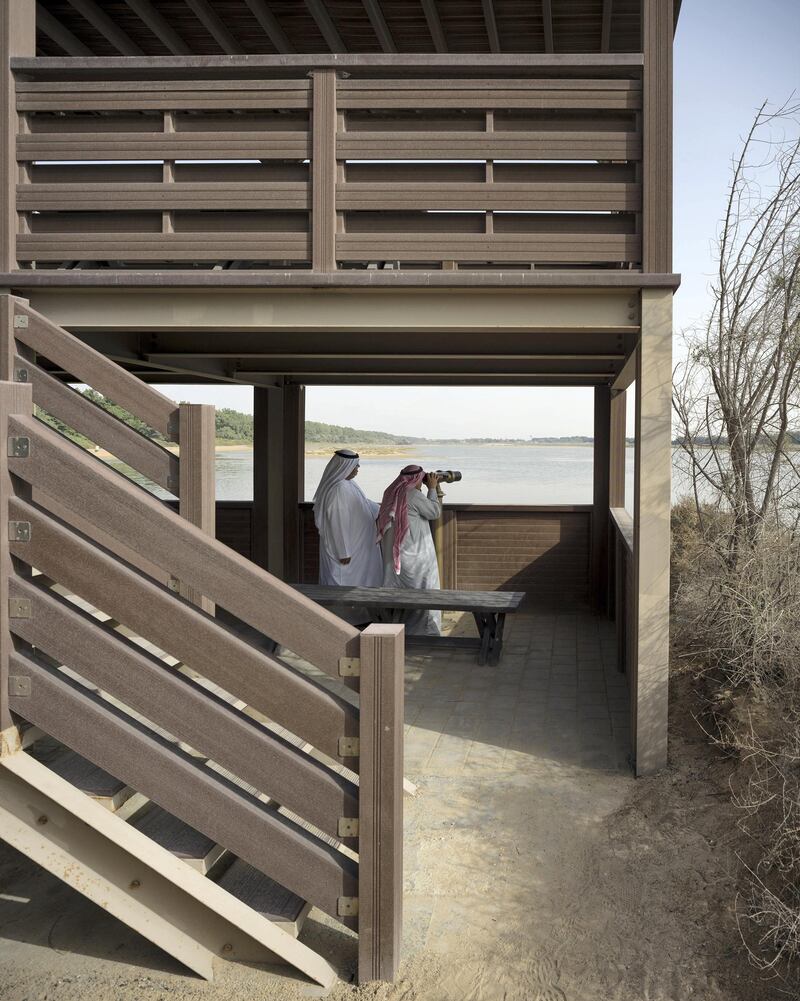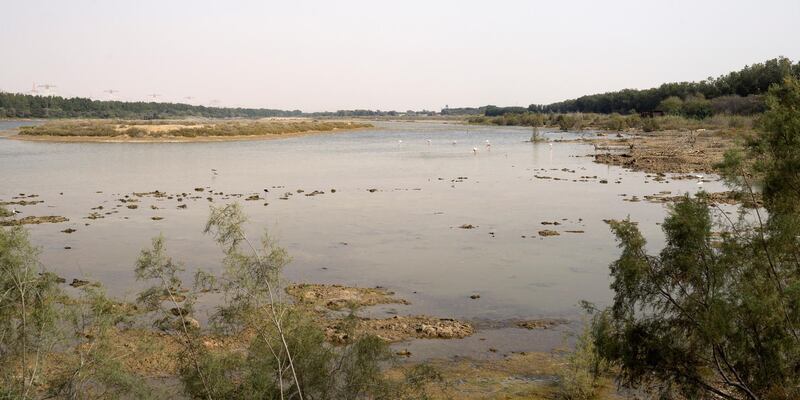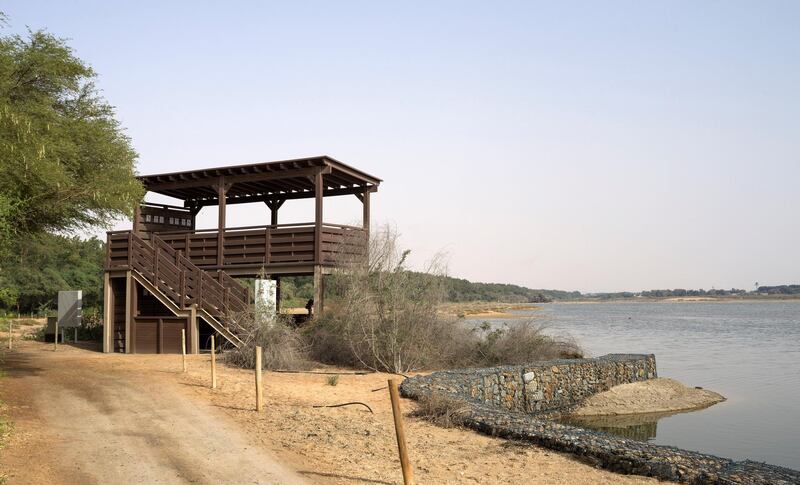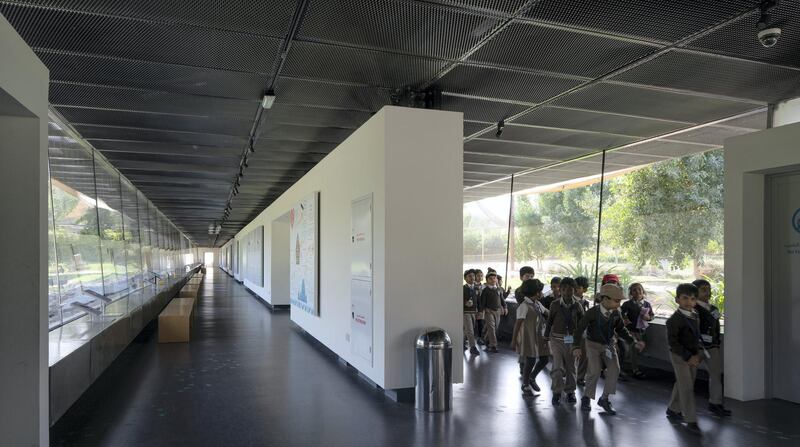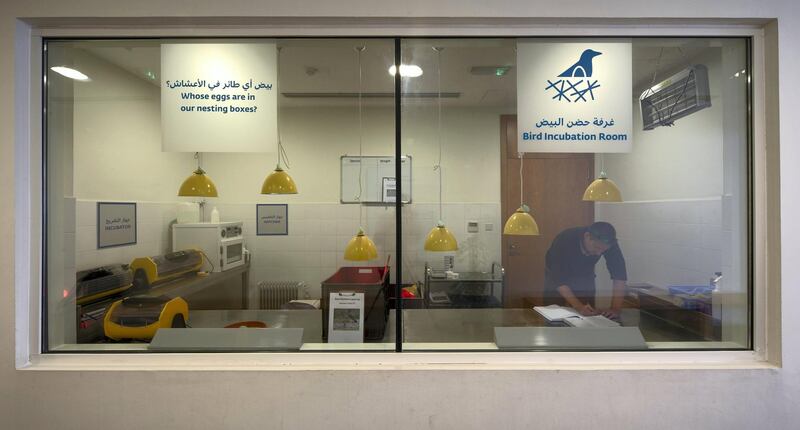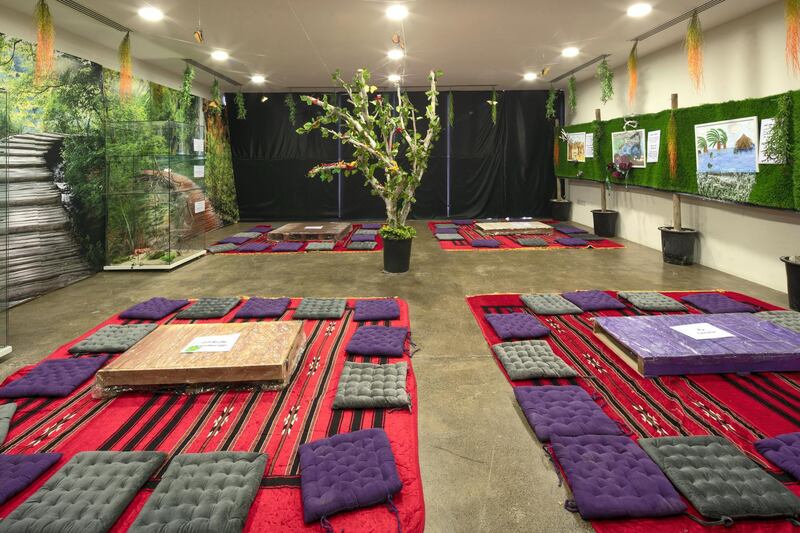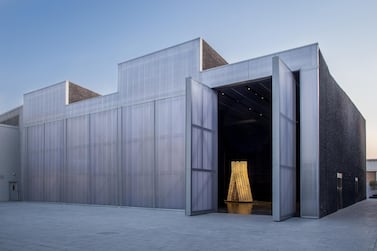The Wasit Wetland Centre in Sharjah is one of six winners of an Aga Khan Award for Architecture.
The project, designed by Dubai firm X-Architects, has transformed a wasteland into a wetland.
Constructed in 2015, the Wasit Wetland Centre is a wildlife park featuring a viewing gallery, where visitors can see birds in their natural habitat, a café and a multipurpose centre with views out over the wetlands. There are also six bird hides positioned around a large lake.
The Wasit Wetland Centre is part of an initiative by Sharjah’s Environment and Protected Areas Agency, which aims to raise awareness about the local environment and to encourage its preservation.
The Aga Khan Award for Architecture jury, which includes Anthony Kwame Appiah and Meisa Batayneh, described the Wasit Wetland Centre as “a remarkable, indeed unique, collaborative project combining architectural excellence with a deep commitment to ecological imperatives.
"Perhaps some of the most striking and exemplary aspects of the project are to be found in its most unconventional virtues. Architecturally speaking, it is intent on disappearing from sight. It merges into the natural environment in ways that respect the site’s integrity – a wonderful way of reminding us that architectural merit resides more and more on a structure’s capacity to blend into an environment rather than challenge it."
Other winners of an Aga Khan Award for Architecture include the Palestinian Museum in Birzeit, the Alioune Diop University Teaching and Research Unit in Bambey, Senegal, and the Revitalisation of Muharraq in Bahrain, a series of restoration projects highlighting the site’s pearling history. The six winners will share $1 million between them.
Twenty projects were shortlisted for the award, including Concrete at Alserkal Avenue and Al Mureijah Art Spaces at the Sharjah Art Foundation. This was the first time in the history of the award that architecture in the UAE was nominated.
The Aga Khan Award for Architecture was established in 1977 to recognise buildings and projects that address the needs of communities with a significant Muslim presence.
The awards ceremony, which is held every three years, will take place in Kazan, Russia, in September.
Winners of the 2019 Aga Khan Award for Architecture
Bahrain – Revitalisation of Muharraq
The project, which highlights the World Heritage site’s pearling history, was first initiated as a series of restoration and reuse projects. The project evolved into a comprehensive programme that aimed to re-balance the city’s demographic makeup by creating public spaces, providing community and cultural venues, and improving the overall environment.
Bangladesh – Arcadia Education Project
The project in South Kanarchor is a modular structure that takes a novel approach to a riverine site that is often flooded for five months every year. Rather than disrupting the ecosystem to create a mound for building, the architect devised the solution of an amphibious structure that could sit on the ground or float on the water, depending on seasonal conditions.
Palestine – Palestinian Museum
The project in Birzeit, which crowns a terraced hill overlooking the Mediterranean, is the recipient of the LEED Gold certification because of its sustainable construction. The zigzagging forms of the Museum’s architecture and hillside gardens are inspired by the surrounding agricultural terraces, stressing the link with the land and Palestinian heritage.
Russian Federation – Public Spaces Development Programme
A programme in the Republic of Tatarstan that, to date, has improved 328 public spaces all over Tatarstan. The ambitious programme sought to counter the trend toward private ownership by refocusing priorities on quality public spaces for the people of Tatarstan. It has now become a model throughout the Russian Federation.
Senegal – Alioune Diop University Teaching and Research Unit
The project in Bambey, where a scarcity of resources led to the use of bioclimatic strategies, includes a large double roof canopy and latticework that avoids solar radiation but allows air to flow through it. By employing familiar construction techniques and following sustainability principles, it succeeded in keeping costs and maintenance demands to a minimum, while still making a bold architectural statement.
United Arab Emirates – Wasit Wetland Centre
Wasit Wetland Centre, in Sharjah, is a design that transformed a wasteland into a wetland and functioned as a catalyst for biodiversity and environmental education. While its indigenous ecosystem has been restored, it has also proven to be a popular place for visitors to appreciate and learn about their natural environment.
